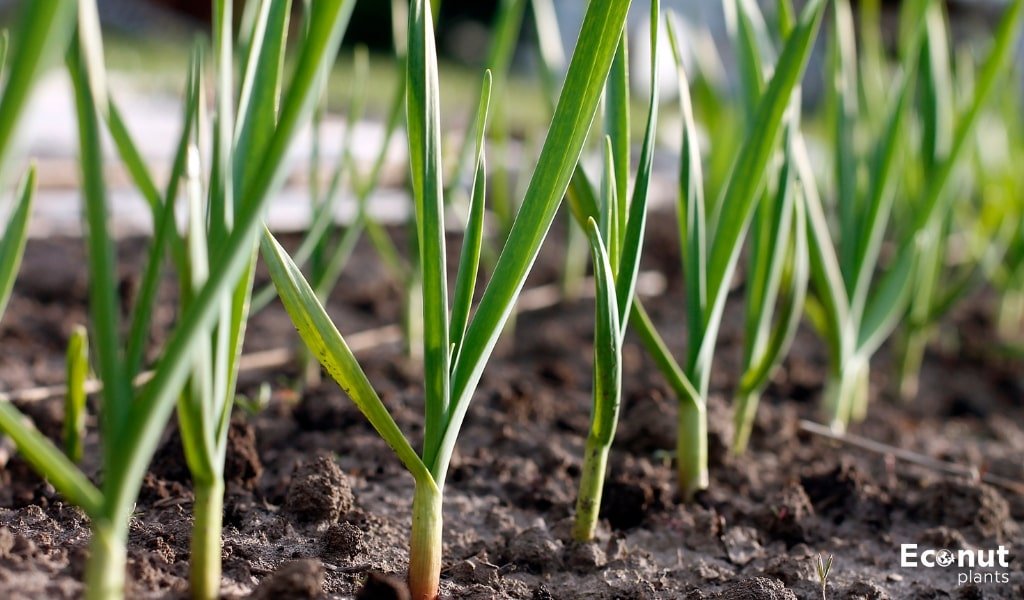Garlic Growing Stages Not only is he entertaining to listen to, but he is also incredibly knowledgeable.
Together with some handmade wine from his vineyard and some inspiring conversation about young bulbs and garlic scapes, I gladly went home. This article will provide you with the ideal growth conditions for garlic.
Garlic Stages of Life
Is it true that some people avoid eating garlic due to the perception that it causes bad odours? Granted, garlic has an odour, but some people think that this is just their body’s natural way of purging harmful poisons from their pores.
Second, adding a lot of fresh parsley to recipes that contain garlic will lessen the overall scent of garlic on the body. First, drinking lemon juice or eating lemons will help with bad breath.
Garlic has varying flavours depending on its species and stage of growth. Below are the several growing stages of garlic, along with advice on when to harvest it at each stage.
Germination
There are usually between six and fifteen separate cloves in each garlic bulb. As a single seed, each clove eventually develops into a whole bulb with several cloves. Garlic cloves are not considered seeds in the conventional sense. While certain garlic varieties do not stop blooming, they usually fade before seeds are formed.
The diversity Fall-planted Early Purple Wight is a soft-neck garlic variety that reaches maturity early, typically in late May in milder climates and early June in northern regions.
Even though shoots don’t often show until late winter, they grow quickly once they do. Garlic plants grown in the spring have shorter growing seasons and produce shoots in a few weeks.
Spring Garlic (Green Garlic)
When the underground young bulbs have finished developing and the plants have sprouted long, lush green branches, it is time to harvest green garlic, also known as spring garlic. Gathering and chopping green garlic follows the same steps as spring onions.
Add the greens to salads and sandwiches, or use them as a garnish. They have an oniony, fresh garlic taste. Seasonal garlic will keep for up to a week in a cool atmosphere.
Scaping
Garlic scapes are the repurposed flower stalks of hard-neck garlic cultivars. If you want to produce huge bulbs, you must remove the garlic scapes and blooms, as they require energy that the bulb does not have. When the garlic head starts to scape, it’s normally about a month away from harvest time.
Garlic scapes are a tasty side crop that grows from lone clover seeds. They taste fantastic when stir-fried, sautéed in butter, or ground into a pesto for garlic scapes! When using scapes, fresh is ideal.
Young Bulb Stage
Harvesting a bulb a few weeks early is always an option if you need garlic and your crop isn’t quite ready. Though they won’t be quite as large as they will be when fully grown, the young bulbs have the extra advantage of being edible when they are still young green leaves.
Young bulbs store poorly, similar to spring garlic and garlic scapes, but can be consumed right away or preserved for up to a week in a cold place.
Mature Bulb Stage
Actually, for the majority of garlic farmers, the mature bulb stage is the most important. Unless you get a sneak peek before pulling the bulbs out of the ground, it’s hard to predict how well your garlic plants will yield until you harvest them!
The leaves will gradually start to turn yellow as they mature in their life cycle, eventually becoming brown to indicate when it’s time to harvest. After being picked, bulbs can be used immediately or stored for later use.
Flowering Stage
Mature garlic bulbs will have unraveled upward-pointing scapes and burst buds that expose a classic allium globe with several tiny white blooms tinted pink and frequently mixed with tiny bulbils.
These are baby garlic cloves called bulbils, which you can save and use when you plant garlic later. Bulbils also have the extra advantage of being disease-free and climate-adapted.
Harvesting Stage
It’s time to harvest the bulbs from your garlic plant when one-third to half of its leaves turn yellow. After pulling as much soil as you can from the entire plant, arrange the bulbs in a single layer in a location that is well-ventilated, shaded, and weatherproof.
When the garlic head, stems, and leaves are ready, they should feel totally dry. To get rid of any remaining dirt, trim back the leaves and peel off the outermost papers. When not in use, plants should be stored somewhere cold and dark. Pick a couple of the biggest, healthiest-appearing bulbs to save as seed for the following year.
Garlic Tips and Tricks
Choosing the correct soil, location, and spacing is one of the most crucial aspects of growing garlic. Planting garlic requires wet, sunny, well-drained soil that holds moisture.
Frequently hoed and spaced at least 8 inches (20 cm) apart, garlic plants do not tolerate bulb competition and do not thrive in weed competition.
FAQ
When is garlic ripe for harvesting, and how can you tell?
Three or four weeks after the garlic scapes have grown, or when one-third to half of the leaves have turned yellow and the stems start to blossom, is when you can harvest your bulbs.
How much time does it take to cultivate garlic?
Garlic sown in the autumn may take nine or ten months to reach maturity. If cloves are sown in late winter or early spring, they can be harvested in five to six months.

